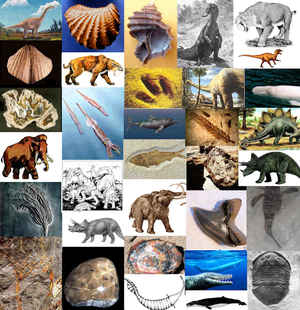
Louisiana Symbols
Louisiana State Fossil
Petrified Palmwood

(Palmoxylon sp.)
Adopted on July 31, 1976.
On July 31, 1976, Louisiana adopted petrified palmwood, (Palmoxylon sp.,) as Louisiana official state fossil. Palmoxylon (Petrified palmwood), is an extinct genus of palm named from petrified wood found around the world, a group of fossil woods that contain prominent rod-like structures within the regular grain of the silicified wood. Around a 100 million years ago, what is now Louisiana was a lush tropical forest. Trees that fell into mineral-rich mud before having a chance to decay became petrified wood, which is actually a quartz-like stone. The organic wood cells were replaced over time by minerals, often retaining the detailed shape of the original prehistoric wood.
Louisiana State Fossil: Petrified Palmwood

Petrified palm wood is the Louisiana state fossil and is characterized by prominent rod-like structures within the regular grain of the silicified wood. These rod-like structures are sclerenchyma bundles that give the palm tree its vertical strength. In Louisiana, petrified palm wood belongs to the genera Palmoxylon. It is found only within the outcrop belt of the Catahoula Formation, which consists almost entirely of sediments deposited within broad, low-lying coastal plains about 24 to 30 million years ago.

Petrified palm wood is a favorite of rock collectors because of its rod-like structures and variety of colors. Depending upon the angle at which the sclerenchyma bundles are cut, these rod-like structures show up as spots, tapering rods, or continuous lines. Depending on how the state's fossil is cut, it exhibits a wide range of colors and designs. As a result, it can be incorporated into a variety of designs for jewelry. Because it is composed of silica, it can be polished and withstands the wear and tear of normal use.
In Texas and Louisiana, petrified palmwood is most common in the Toledo Bend area, which is shared by both states. It was left by trees that grew when the Gulf of Mexico's shoreline was much farther north from its present day position. In Louisiana, petrified palmwood is found in the parishes of Rapides, Natchitoches, Grant, and Sabine. In Grant Parish (and probably in other areas also), Native Americans used petrified palmwood to make projectile points and other tools such as knives, awls, and scrapers. Projectile points and other tools crafted from petrified palmwood have been discovered in central Grant Parish by H.R. Hicks and other Native American artifact collectors. It is the state stone of Texas and the official state fossil of Louisiana.
Louisiana Laws Revised Statutes
The law designating the petrified palmwood as the official Louisiana state fossil is found in the Louisiana Revised Statutes, Title 49, Section RS 49:162.
TITLE 49 - State administration
RS 49:162 - State fossil
Universal Citation: LA Rev Stat § 49:162
§162. State fossil
There shall be an official state fossil. The official state fossil shall be petrified palmwood. Its use on official documents of the state and with
the insignia of the state is hereby authorized.
Added by Acts 1976, No. 362, §1.
Taxonomic Hierarchy: Petrified Palmwood
Kingdom: Plantae
(unranked): Angiosperms
(unranked): Monocots
(unranked): Commelinids
Order: Arecales
Family: Arecaceae
Subfamily: Coryphoideae
Genus: Palmoxylon

Some states that lack a "state fossil" have nevertheless singled out a fossil for formal designation such as a state dinosaur, rock, gem or stone.






